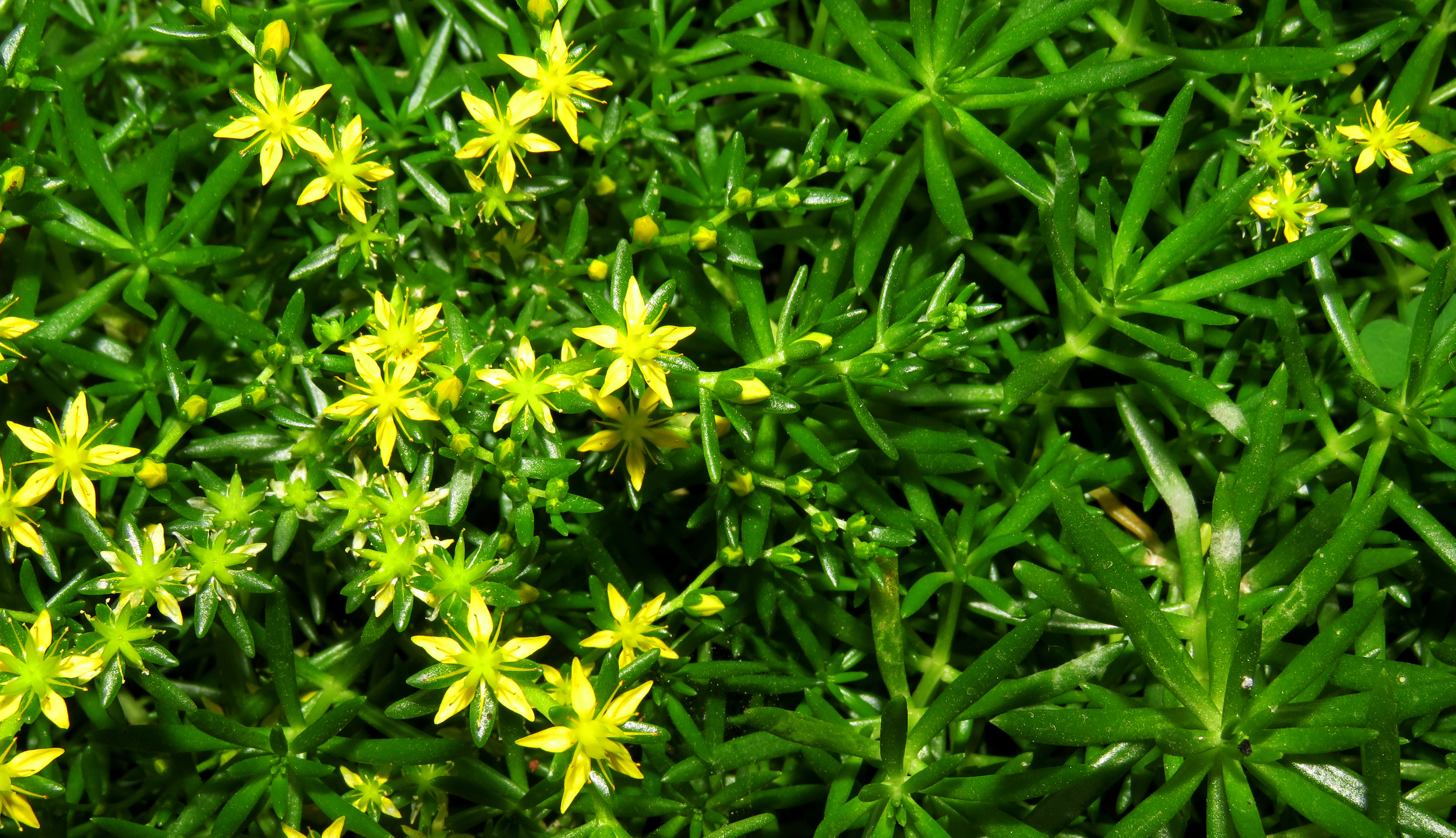Stringy Stonecrop
(Sedum sarmentosum)

Description
Sedum sarmentosum, known as stringy stonecrop, gold moss stonecrop, and graveyard moss, is a perennial flowering plant in the family Crassulaceae native to East Asia (China and Korea) and Southeast Asia (Thailand). It has been introduced in at least eastern North America, and Europe. Sedum sarmentosum has succulent, evergreen leaves atop arching, low-lying stems. Yellow flowers with five petals arise on inflorescences during the summer. Sedum sarmentosum is cultivated as a perennial groundcover in temperate climates. Like most succulents, it is tolerant of drought and full sun conditions. It was commonly planted at graves, where it may persist for decades. The spicy, sweet, and tangy sauce typically served with dolnamul can be made by mixing gochujang, vinegar (or lemon juice), sugar (or plum syrup), minced garlic, sesame oil, and toasted sesame seeds. Dolnamul is also a common ingredient in bibimbap, as well as Korean-style western food such as dolnamul and roasted fruit salad with yuja dressing. Sedum is a large genus of flowering plants in the family Crassulaceae, members of which are commonly known as stonecrops. The genus has been described as containing up to 600 species, subsequently reduced to 400–500. They are leaf succulents found primarily in the Northern Hemisphere, but extending into the southern hemisphere in Africa and South America. The plants vary from annual and creeping herbs to shrubs. The plants have water-storing leaves. The flowers usually have five petals, seldom four or six. There are typically twice as many stamens as petals. Various species formerly classified as Sedum are now in the segregate genera Hylotelephium and Rhodiola. Sedum was first formally described by Carl Linnaeus in 1753, with 15 species. Of the genera encompassed by the Crassulaceae family, Sedum is the most species rich, the most morphologically diverse and most complex taxonomically. Historically it was placed in the subfamily Sedoideae, of which it was the type genus. Of the three modern subfamilies of the Crassulaceae, based on molecular phylogenetics Sedum is placed in the subfamily Sempervivoideae. Although the genus has been greatly reduced, from about 600 to 420–470 species, by forming up to 32 segregate genera, it still constitutes a third of the family and is polyphyletic.
Taxonomic tree:







